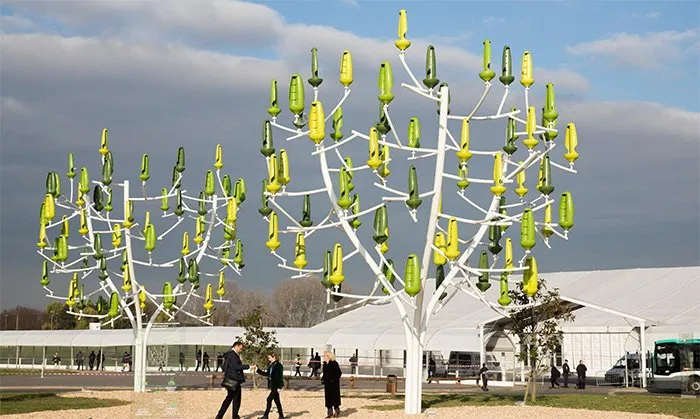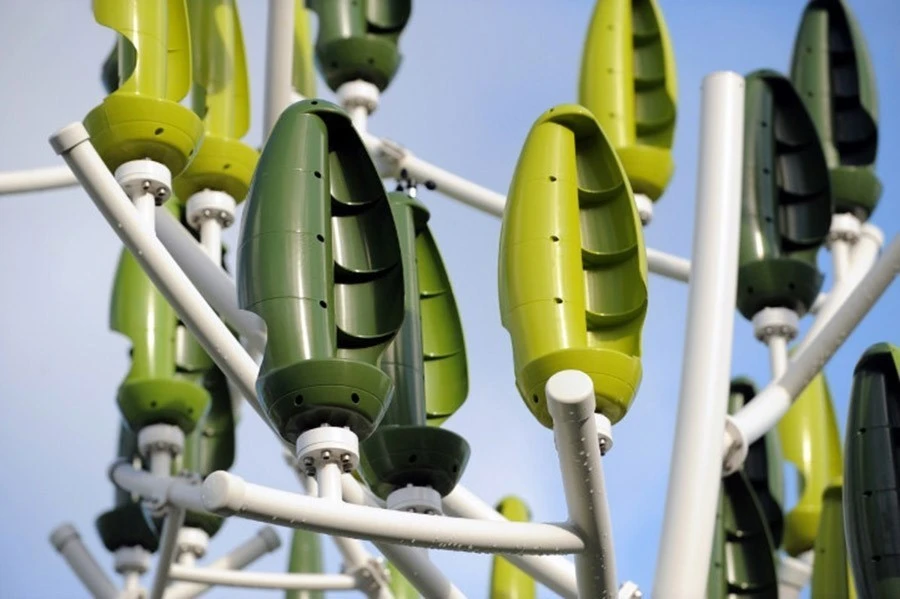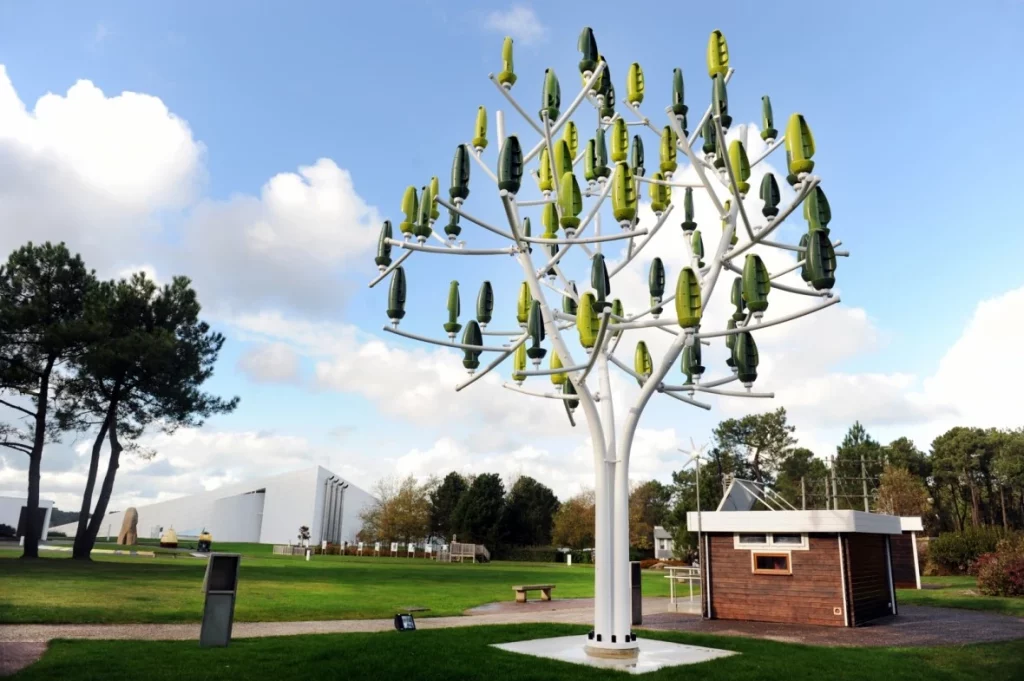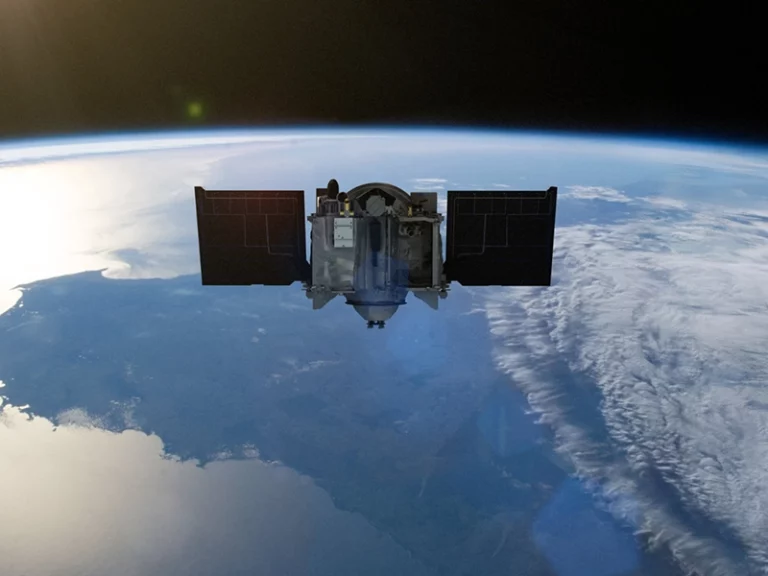The Wind Tree, is it worth it? It is a unique wind turbine design that mimics the structure of a tree, with small turbines arranged like leaves on its branches.
This innovative technology was developed by the French company New Wind, which first introduced the Wind Tree concept in 2015.
Since then, the Wind Tree has garnered attention as a potential solution for generating renewable energy in urban environments, where traditional wind turbines may not be feasible.

Is the “Wind Tree” worth it compared with traditional power sources?
While the cost of a Wind Tree installation can vary depending on factors such as location and capacity, they typically range from around €25,000 to €40,000 per unit. However, the potential energy savings and environmental benefits of the technology may make it a worthwhile investment for some communities and businesses.
Like any mechanical system, the Wind Tree turbines will require some maintenance over their lifespan to ensure that they continue to function properly and efficiently.
However, the amount and frequency of maintenance required may be lower than that of traditional wind turbines, thanks to the simpler and more modular design of the Wind Tree.
Some potential maintenance tasks for the Wind Tree turbines could include:
- Cleaning the turbines and blades to remove dirt, dust, or debris that could impact their performance
- Checking the bearings and other mechanical components for signs of wear or damage
- Replacing any damaged or malfunctioning turbines or blades
- Updating the software or control systems to optimize performance or address any issues
The exact maintenance requirements will depend on factors such as the age and usage of the turbines, the local climate and environment, and the specific design of the Wind Tree installation.
However, because the Wind Tree turbines are relatively small and modular, they may be easier and less expensive to maintain than larger, more complex wind turbines.
Electricity production and technical details
When I first found out about this invention it really shocked me in a positive way. The design like a tree is fascinating as it mimics nature aesthetically but also saves nature from pollution same as trees really do after all.
After these thoughts, the first thing that I started asking myself was how much can it actually produce. Will it be something minimalistic, will it ever be worth the investment?
In the economy, we live in, we don’t put a cost on the environment. I’m saying this because after I studied the numbers, it looks like a lost cause, economically speaking.
But before we dive into that simple math, let’s explore more about the “Wind Tree”.
The turbines that look like leaves
Most probably the most eye-catching detail of the whole setup.

Actually, the special-shaped turbines, are the star of the show and are designed to harvest the wind and rotate in any direction. They are attached to a mini generator, like those we use on bicycles that generate power and turn on the headlight.
When the wind blows, it rotates the “leaves” which rotate the rotor of the generator they are attached to. This way the electric energy is produced by each turbine unit.
The “Wind Tree” power production
One “Wind Tree” can support anywhere from 18 to 72 small turbines. The power produced heavily depends on the wind speed. On average it is considered that each tree can produce from 200 to 400 Watts (depending on the wind speed).
If we consider it working 24h, producing an average of 300 Watts of power, the total energy will be 300W x 24h = 7200Wh.
The “Wind Trees” can be installed in clusters of 36 units with a total power of up to 11.5kW (276 kWh). Which is considerable and can power many homes or other infrastructures.
The electric power produced is DC (direct current). The produced power could be used for charging batteries or converted to AC (alternative current) for feeding back into the grid, etc.
The economic calculation and comparison
An important part of the whole thing is how it compares with traditional energy sources. Obviously, we will not take into account hydroelectric power production which is the greenest already.
The Wind Tree Vs. conventional Wind Turbines
Here’s an example calculation comparing the costs of electricity production from a traditional wind turbine versus a Wind Tree:
Assumptions:
- A traditional wind turbine has a rated power output of 1 MW and a capacity factor of 40%
- A Wind Tree has an average power output of 300 watts and a capacity factor of 20%
- The cost of electricity from the grid is $0.10-$0.20 per kilowatt-hour (kWh)
Cost of traditional wind turbine for the first year:
- 1 MW x 40% = 400 kW average power output
- 400 kW x 24 hours x 365 days = 3,504,000 kWh annual energy output
- Assuming a capital cost of $1,500 per kW and an operating cost of $0.03 per kWh, the total cost per year would be:
- Capital cost: $1,500/kW x 1,000 kW = $1,500,000
- Operating cost: $0.03/kWh x 3,504,000 kWh = $105,120
- Total cost: $1,500,000 + $105,120 = $1,605,120
- Cost per kWh: $1,605,120 / 3,504,000 kWh = $0.458/kWh (for the first year)
Cost of Wind Tree for the first year:
- 300 W x 24 hours x 365 days = 2,628 kWh annual energy output per tree
- Assuming a capital cost of $37,500 per tree and an operating cost of $0.01 per kWh, the total cost per year would be:
- Capital cost: $37,500/tree
- Operating cost: $0.01/kWh x 2,628 kWh = $26.3
- Total cost: $37,500 + $26.3 = $37,526
- Cost per kWh: $37,526 / 2,628 kWh = $14.28/kWh (for the first year)
Considering the grid price of $0.2/kWh, the Wind Tree produces $518/year of energy value. It would take roughly 72 years for the Wind Tree to cover its initial investment.
At a glance:
- The initial cost for a single Wind Tree: ~$37,500 / One time
- Value of the energy produced per month: $43.2
- Value of the produced energy in a year: $43.2 * 12 = $518
- Years for the return on the initial investment: ~72 years
Based on these assumptions, the cost per kilowatt-hour of electricity produced by the Wind Tree is significantly higher than that of a traditional wind turbine. These figures might not be very precise but they still show an immense difference.
To see how it compares with solar panels, read this article: Economics Of Solar Panels: Initial Expenses And Savings.
The Wind Tree Vs. gas-powered electricity-producing implants
It is important to note, however, that even with the cost savings of the Wind Tree over time, the initial investment required to install a cluster of these turbines can be prohibitively expensive for some communities or businesses.
In addition, when comparing the costs of the Wind Tree to traditional fuel-based power plants, it is crucial to consider the environmental impact of the latter.
Cost of fuel-based power plant:
- 1 MW x 90% = 900 kW average power output
- 900 kW x 24 hours x 365 days = 7,884,000 kWh annual energy output
- The amount of natural gas required to produce this amount of electricity can be calculated as follows:
- Heat rate = 3,412 Btu/kWh / 0.40 efficiency = 8,530 Btu/kWh
- MMBtu required = 7,884,000 kWh x 8,530 Btu/kWh / 1,000,000 = 67,179 MMBtu
- Assuming a cost of $4.00/MMBtu, the total fuel cost would be:
- Fuel cost: $4.00/MMBtu x 67,179 MMBtu = $268,716
- Assuming a capital cost of $1,500 per kW and an operating cost of $0.03 per kWh, the total cost per year would be:
- Capital cost: $1,500/kW x 1,000 kW = $1,500,000
- Operating cost: $0.03/kWh x 7,884,000 kWh = $236,520
- Total cost: $1,500,000 + $268,716 + $236,520 = $2,005,236
- Cost per kWh: $2,005,236 / 7,884,000 kWh = $0.254/kWh
Based on these assumptions, the cost per kilowatt-hour of electricity produced by the Wind Tree is significantly higher than that of a fuel-based power plant. However, over time the cost of the Wind Tree will decrease.
Conclusions
We compared in this article the electric energy production costs of the “Wind Tree” with other traditional sources. The results at a glance are the following:
The “Wind Tree”: $14.28 / kWh. (for the first year)
Traditional Wind Turbines: $0.458 / kWh. (for the first year)
Fuel-based plants: $0.254 / kWh.
These numbers speak for themselves, no debate there. As long as we don’t consider economically the environmental impact of fuel-based power plants there is no chance for the “Wind Trees” to grow in our gardens.
While the upfront costs of installation may be high, the long-term benefits of this technology cannot be understated. With continued research and development, it is possible that the Wind Tree and other similar technologies will become more affordable and accessible, paving the way toward a cleaner, more sustainable future.
Check out this other article to learn more about Innovative Solutions For A More Resilient Future.
Thanks for reading!





